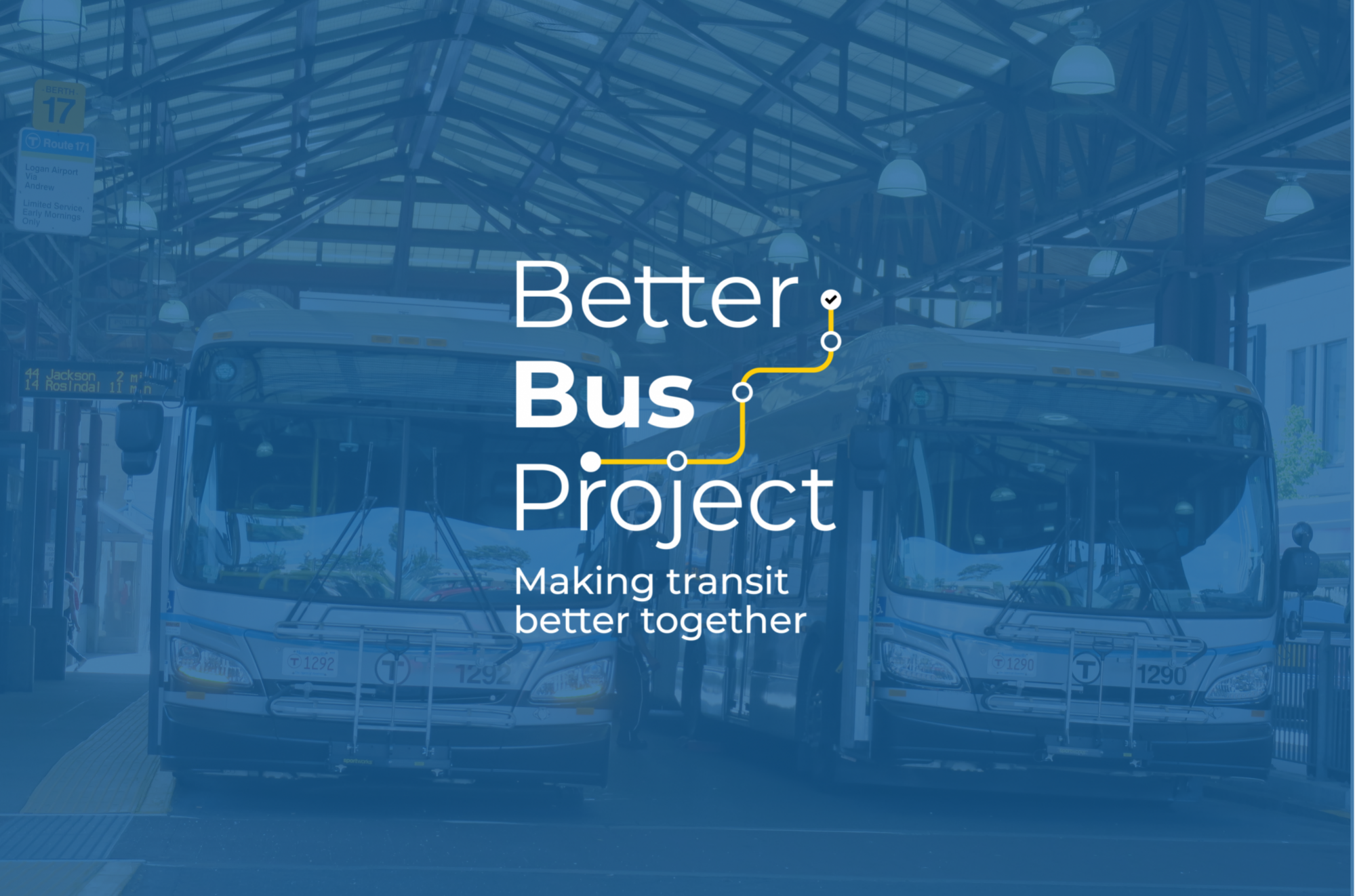Transit Priority Strategy

Our riders need to get to their destinations reliably and quickly. Too often, buses are stuck in traffic. This can lead to longer travel times and potentially unpredictable and unreliable service. We are collaborating with communities to redesign key streets in the Greater Boston area using transit priority. Transit priority is a set of tools that help buses get out of congestion and get you where you need to go faster. These include street design, infrastructure, policies, and traffic operations.
Transit priority streets result in fewer delays, faster trips, and better service. They are designed to keep everyone safe, including pedestrians and bike riders. Our goal is to improve reliable travel times to enable more people to take the bus. This can also help relieve traffic congestion across the region.
To learn where and how we’re planning transit priority, jump to the relevant section below:
Where We’re Planning Transit Priority
The Transit Priority Vision details our focus on 26 high traffic corridors where transit priority will have the biggest impact on improving travel times. These corridors have high levels of traffic congestion, slowing down buses and making service less reliable. While these corridors cover just 10 to 15 percent of the bus network, they carry 80 percent of all bus riders. Applying transit priority in these areas will improve travel times and reliability for 220,000 daily riders.
Transit Priority Vision and Map
The Bus Priority Vision report outlines where we want to build transit priority to have the biggest impact on improving bus speed and reliability, and where we're currently in progress implementing transit priority projects. Many of these projects are in support of the Bus Network Redesign with new bus lanes, queue jumps and TSP locations.
The Transit Priority Map illustrates the vision report: where transit priority measures have been installed, where projects are currently underway, and where we’re planning to build more. Some of these projects are in design or construction, while others have not yet begun.
-
View an interactive version of our Transit Priority Map, which allows you to see existing routes along with planned priority projects. You can enter an address or search for a location to see transit routes and plans in your neighborhood.
-
Download our printable Transit Priority Map to view a printable version of where we’re planning and implementing projects.
How We’re Implementing Transit Priority
We use a variety of strategies to enact transit priority streets. These are detailed in the Toolkit.
Bus Priority Toolkit
The Bus Priority Vision tells us where we need transit priority, while our Bus Priority Toolkit explains how to design streets that put transit first. The toolkit outlines available transit priority designs and technological tools. This document helps us collaborate with our partners to redesign city streets and state roads to improve bus times and service reliability.
Some of the most common transit priority options are:
- Dedicated bus lanes
- Shared bus/bike lanes
- Center-running bus lanes
- Transit signal priority
- Queue jumps
- Fixed guideways
Types of Transit Priority Strategies
Click through the photos below to learn about each type of strategy. More details about these and other bus priority tools and how they can be applied in different contexts are available in the Bus Priority Toolkit.
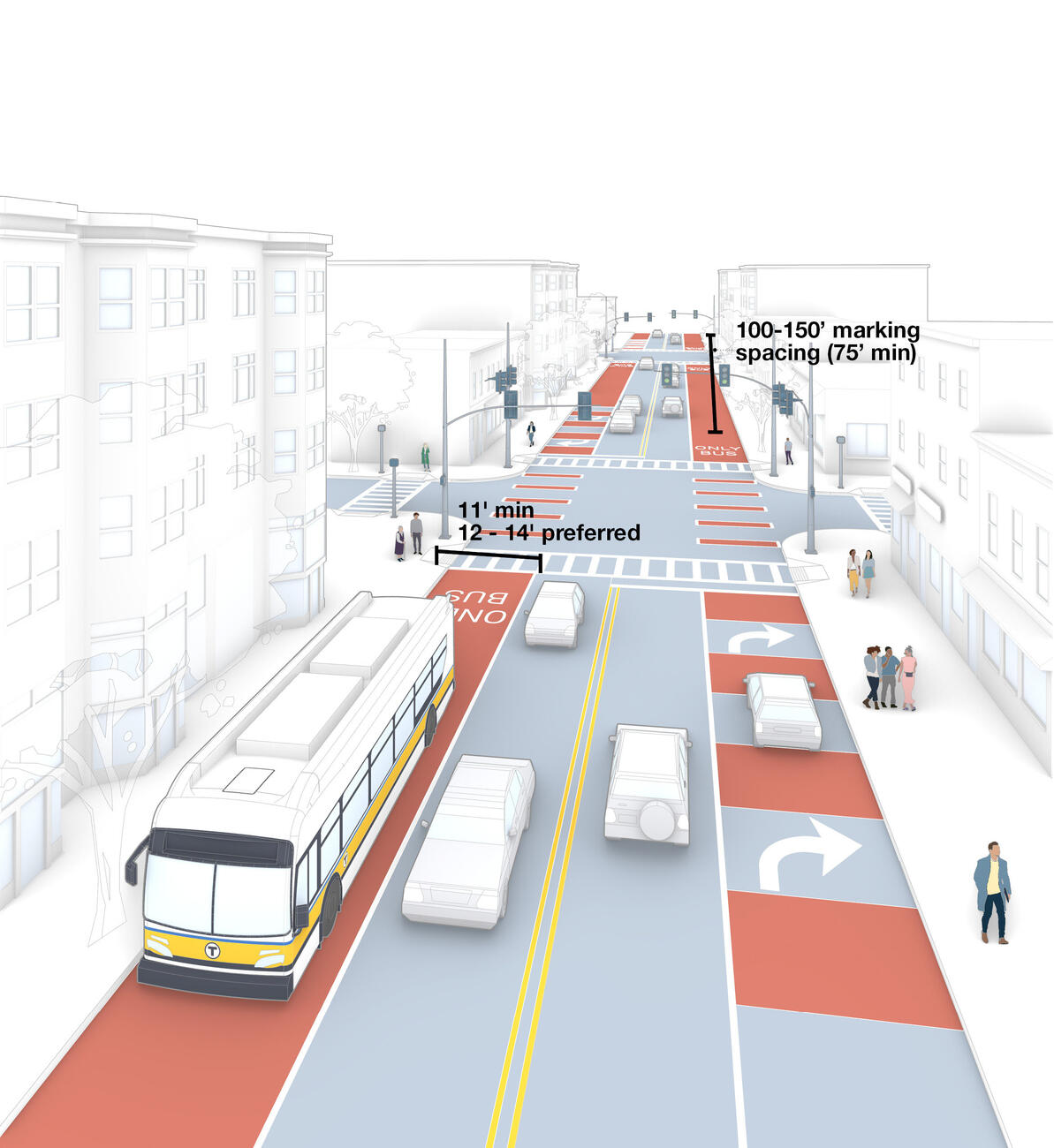
Dedicated Bus Lanes
This gives buses their own space free of car traffic, allowing them to move faster than other vehicles, even in congested areas. Dedicated bus lanes are recognizable by red paint and “Bus Only” markings.
Emergency vehicles may also use these lanes, and other vehicles may only use the bus lane to turn right at intersections.
When to Use This Strategy
These work best where congestion leads to bus delays and service unreliability and where there are low to moderate curb, street, or driveway conflicts.
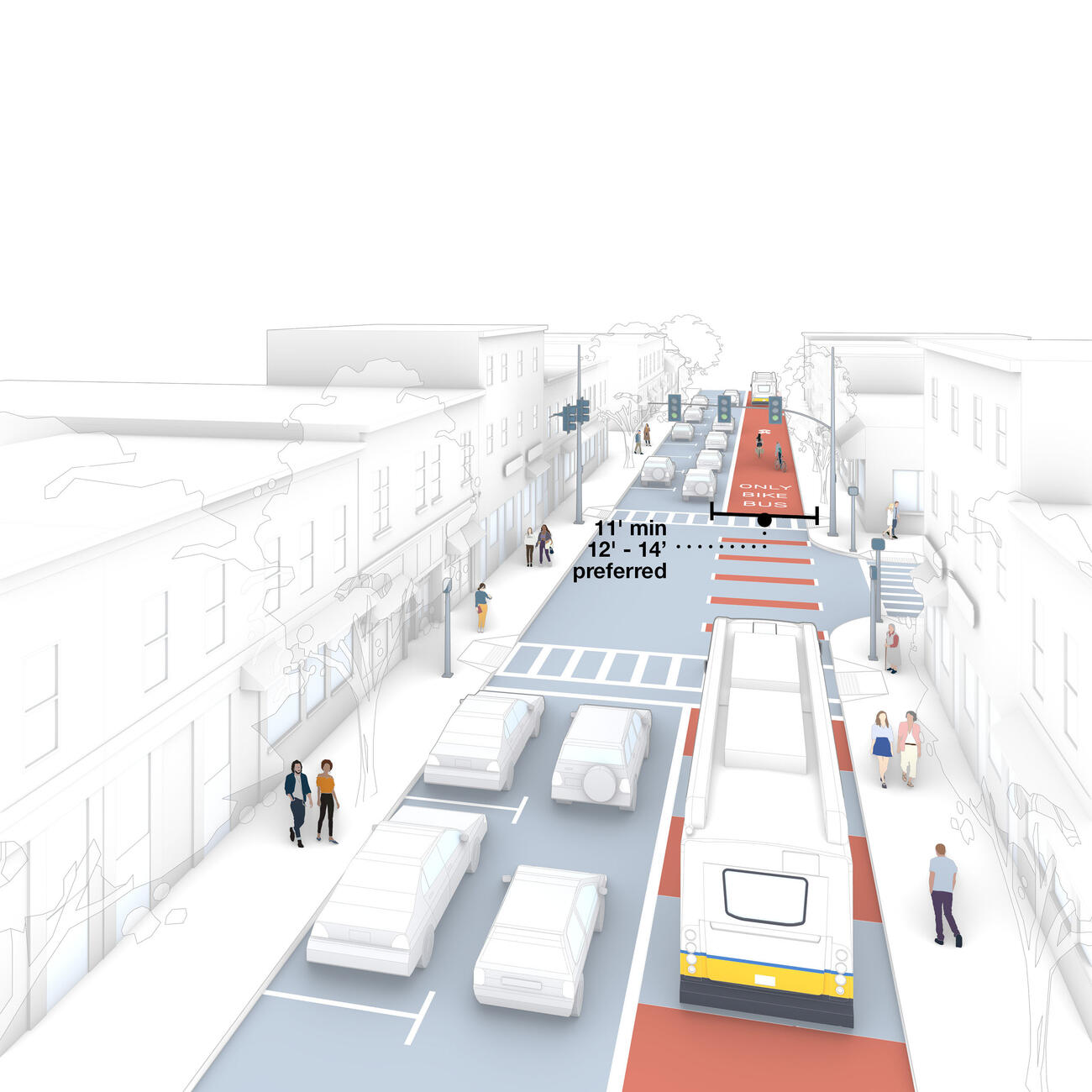
Shared Bus/Bike Lanes
These are similar to dedicated bus lanes but include space for cyclists.
When to Use This Strategy
They work well in corridors that do not have very frequent bus service or high volumes of people biking, and where there is not enough space for a dedicated bicycle lane.
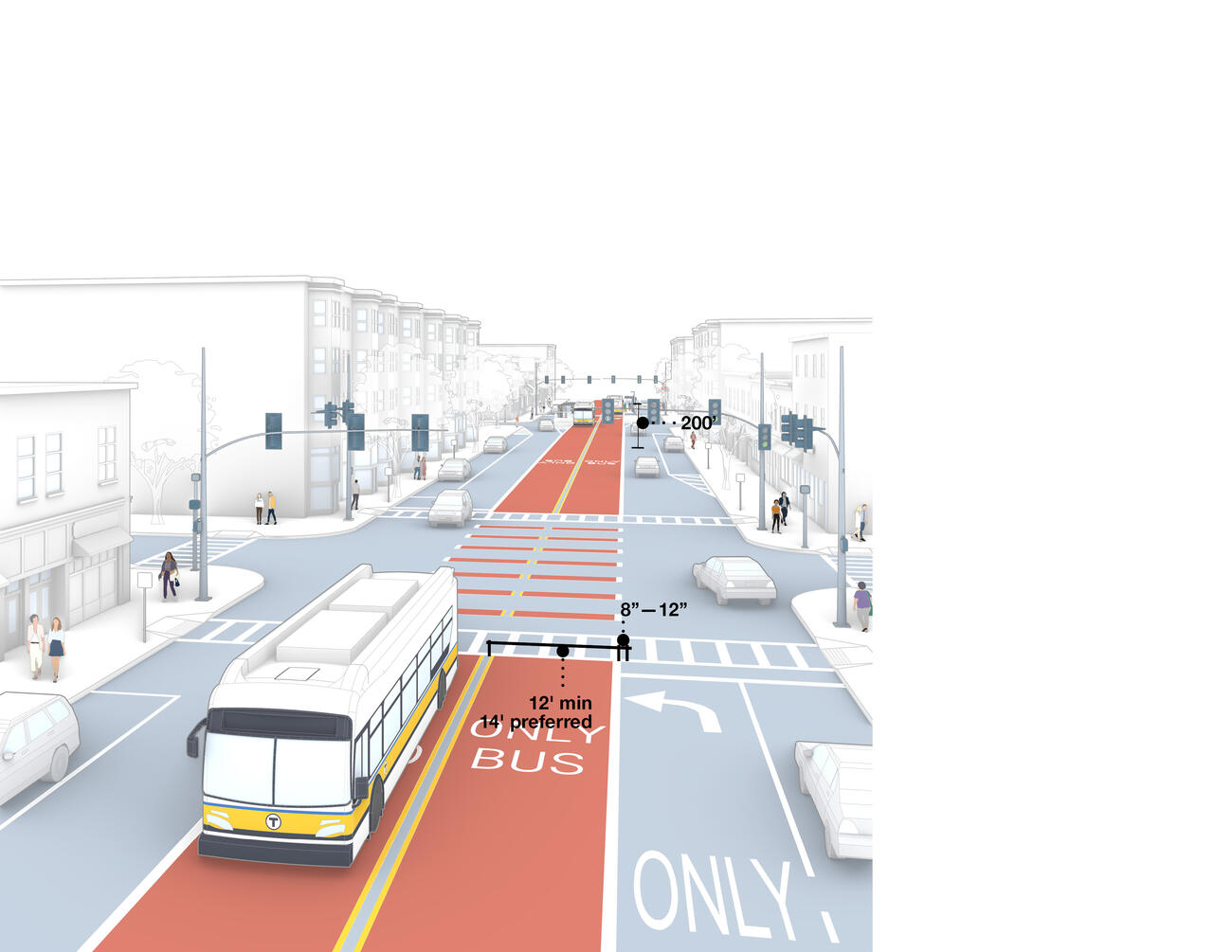
Center-running Bus Lanes
These are a type of dedicated bus lane that run along the inner divider, rather than curbside. This layout helps avoid conflicts between buses and other vehicles, bike lanes, driveways, or on-street parking. Like other bus lanes, they use red paint and “Bus Only” markings and signage.
When to Use This Strategy
This design requires space for boarding platforms in the median at bus stop locations, as well as dedicated transit signals to help buses turn from the center lane. To accommodate this, center-running bus lanes are typically used on wider streets with at least two lanes in each direction.
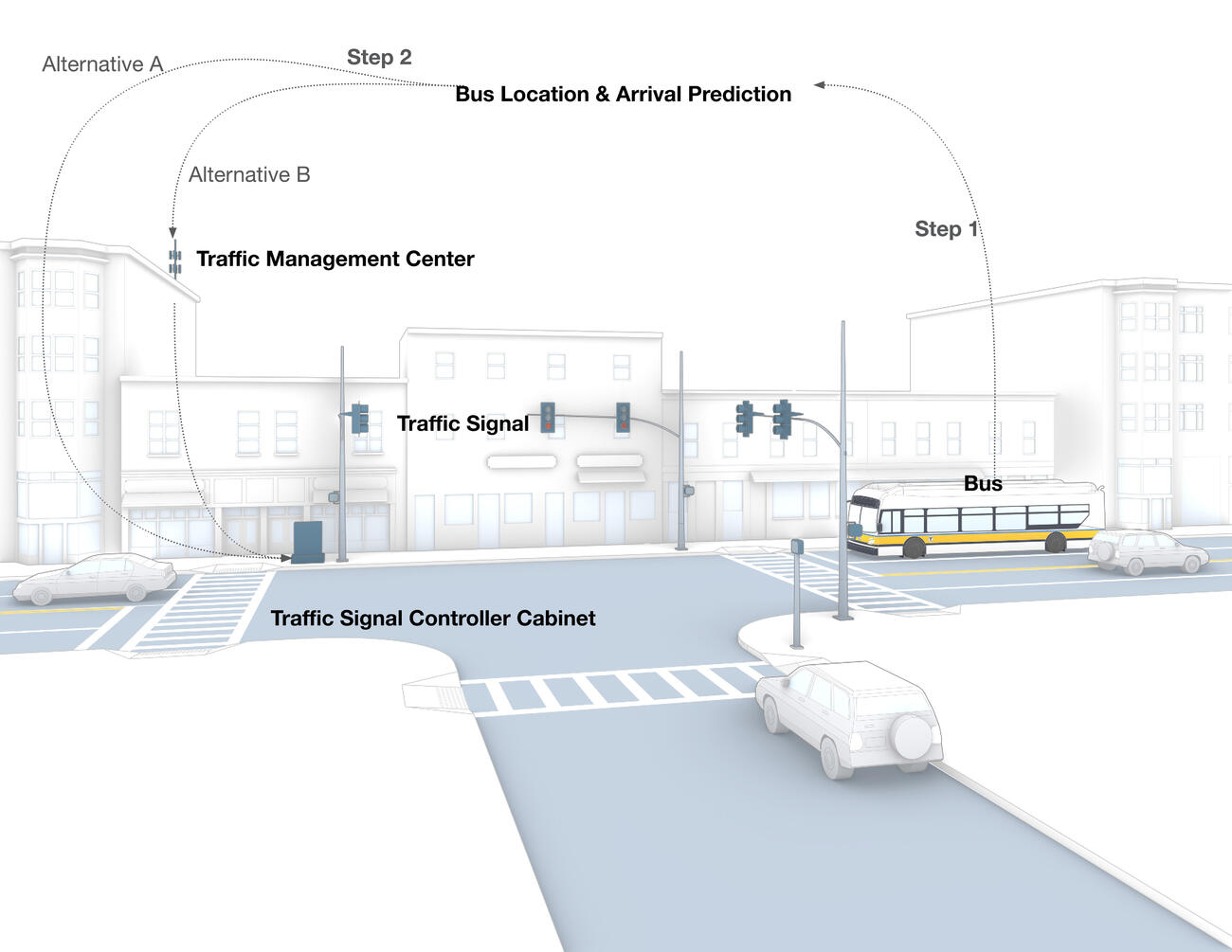
Transit Signal Priority (TSP)
This gives special preference to buses at intersections to improve speed and reliability. This can happen in two ways:
- Passive TSP: On transit corridors, signal timing is optimized to match the average bus speed using normal signal equipment.
- Active TSP: Special sensors are added to buses to communicate with traffic signals. As buses approach intersections, signal timing gets adjusted to reduce the amount of time buses wait at red lights.
When to Use This Strategy
This works best on streets with moderate congestion, where buses can get close enough to the signal to take advantage of TSP in one cycle, or when paired with dedicated bus lanes.
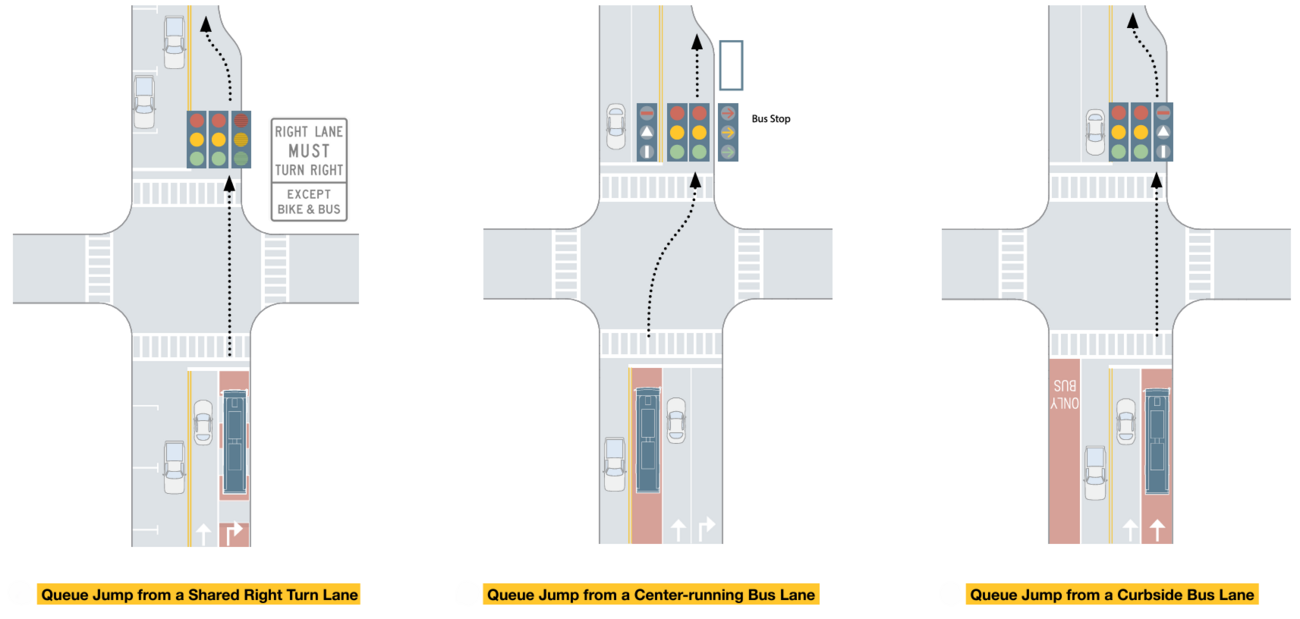
Queue Jump
Queue jumps allow buses to travel through the intersection ahead of general traffic. Buses can bypass the front of the line and get a head start at the beginning of the next signal cycle. This is possible by using a dedicated bus lane or shared turn lane with low amounts of turning vehicles. Signal phasing can also provide a transit-only signal phase when a bus is detected. This allows buses to travel through the intersection ahead of general traffic.
When to Use This Strategy
These work well at congested intersections, and places where bus lanes end and buses need to merge with general traffic. They can also be implemented at intersections that have a right turn pocket but not enough space for a bus lane.
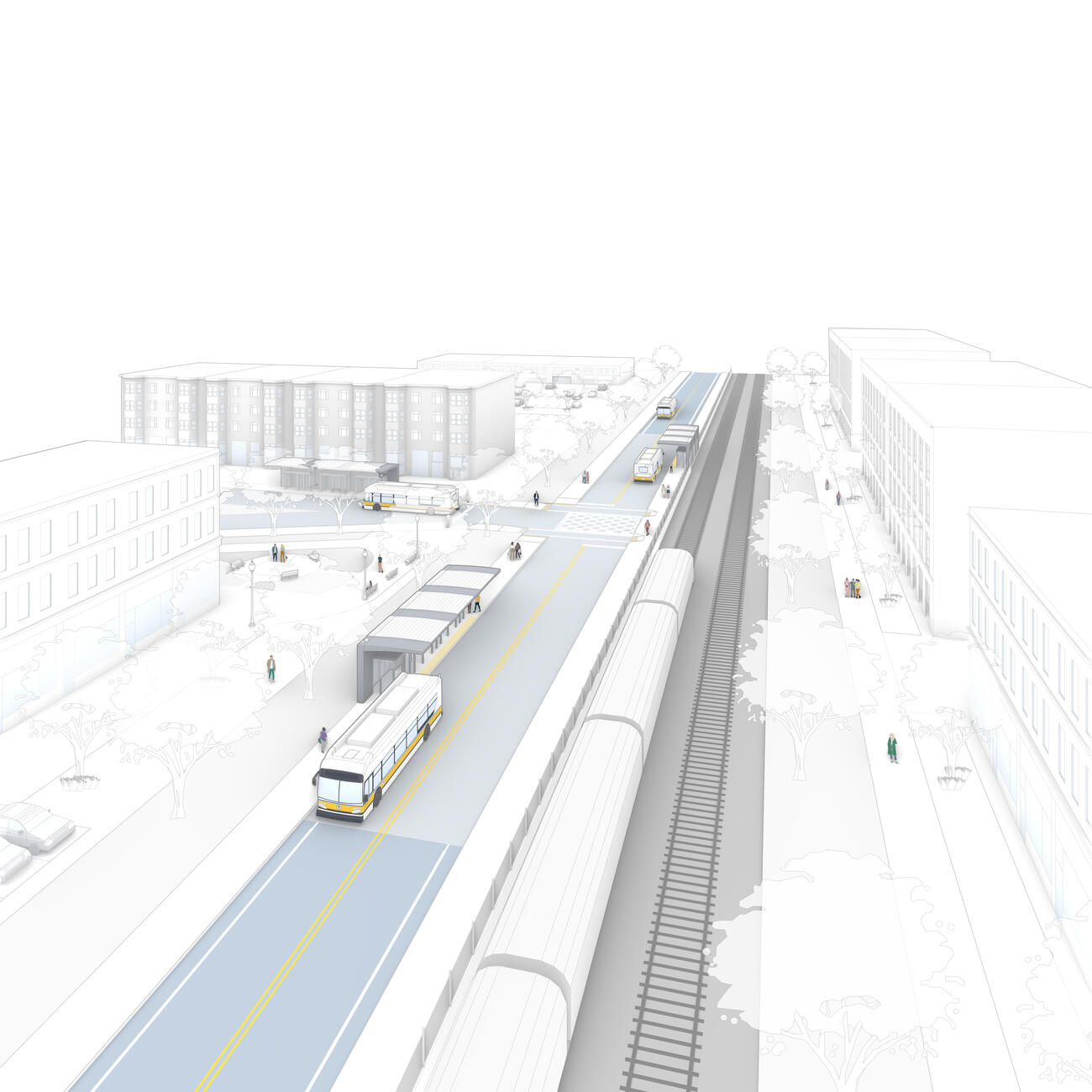
Fixed Guideway
Fixed guideways are busways that are separate from the street network. This maximizes bus speed and reliability by limiting intersections and conflict points with cars. Fixed guideways can be at street level, elevated, below street level, or tunnels, and many are built along rail tracks.
When to Use This Strategy
They work well for corridors with high ridership and limited stops over longer distances.
Building a Better T
As part of our $9.6 billion, 5-year capital investment plan, we're renovating stations, modernizing fare collection systems, upgrading services for our buses, subways, and ferries, and improving the accessibility of the entire system.
Contact Us
For questions and comments related to Transit Priority, please contact the Better Bus Project at betterbusproject@mbta.com.
Related Projects
Too many of our bus routes still fail to live up to our own standards. Through the Better Bus Project, we are changing that.
Building a Better T
As part of our $9.6 billion, 5-year capital investment plan, we're renovating stations, modernizing fare collection systems, upgrading services for our buses, subways, and ferries, and improving the accessibility of the entire system.
Related Projects
Too many of our bus routes still fail to live up to our own standards. Through the Better Bus Project, we are changing that.

